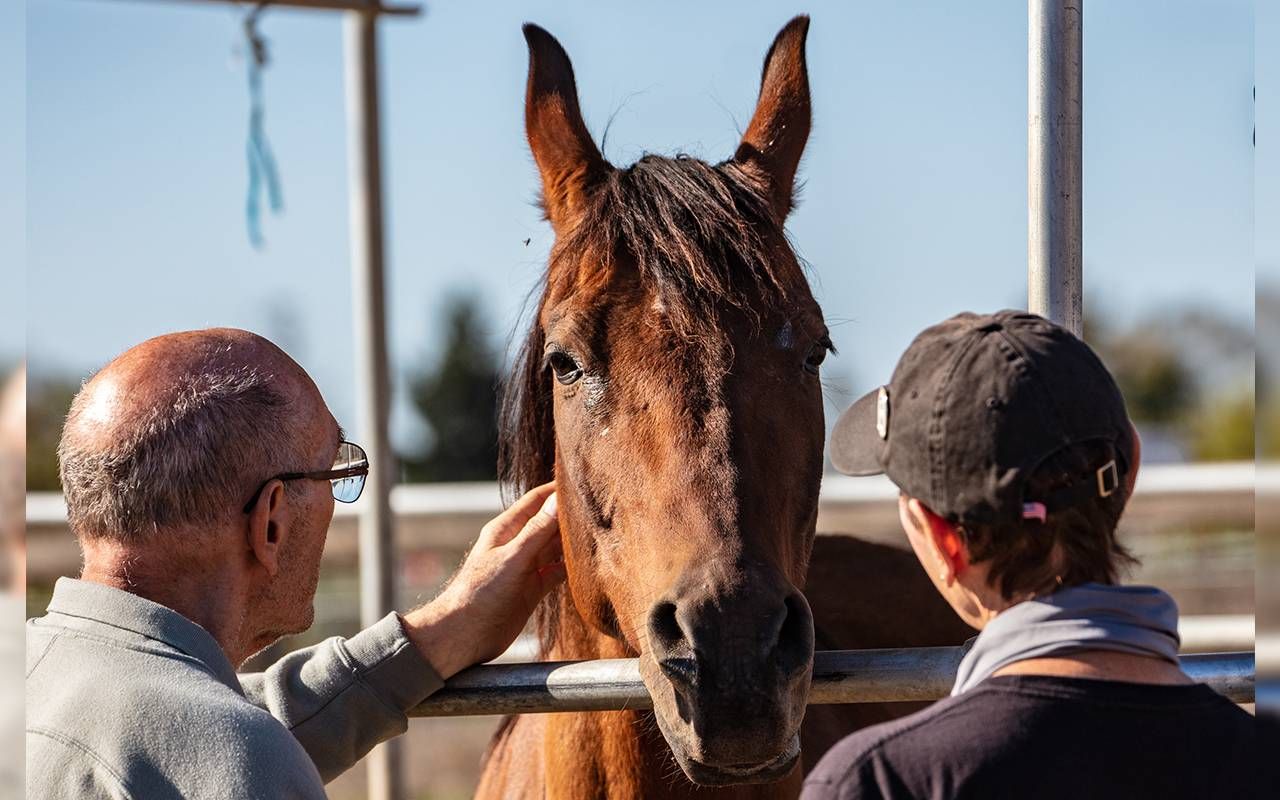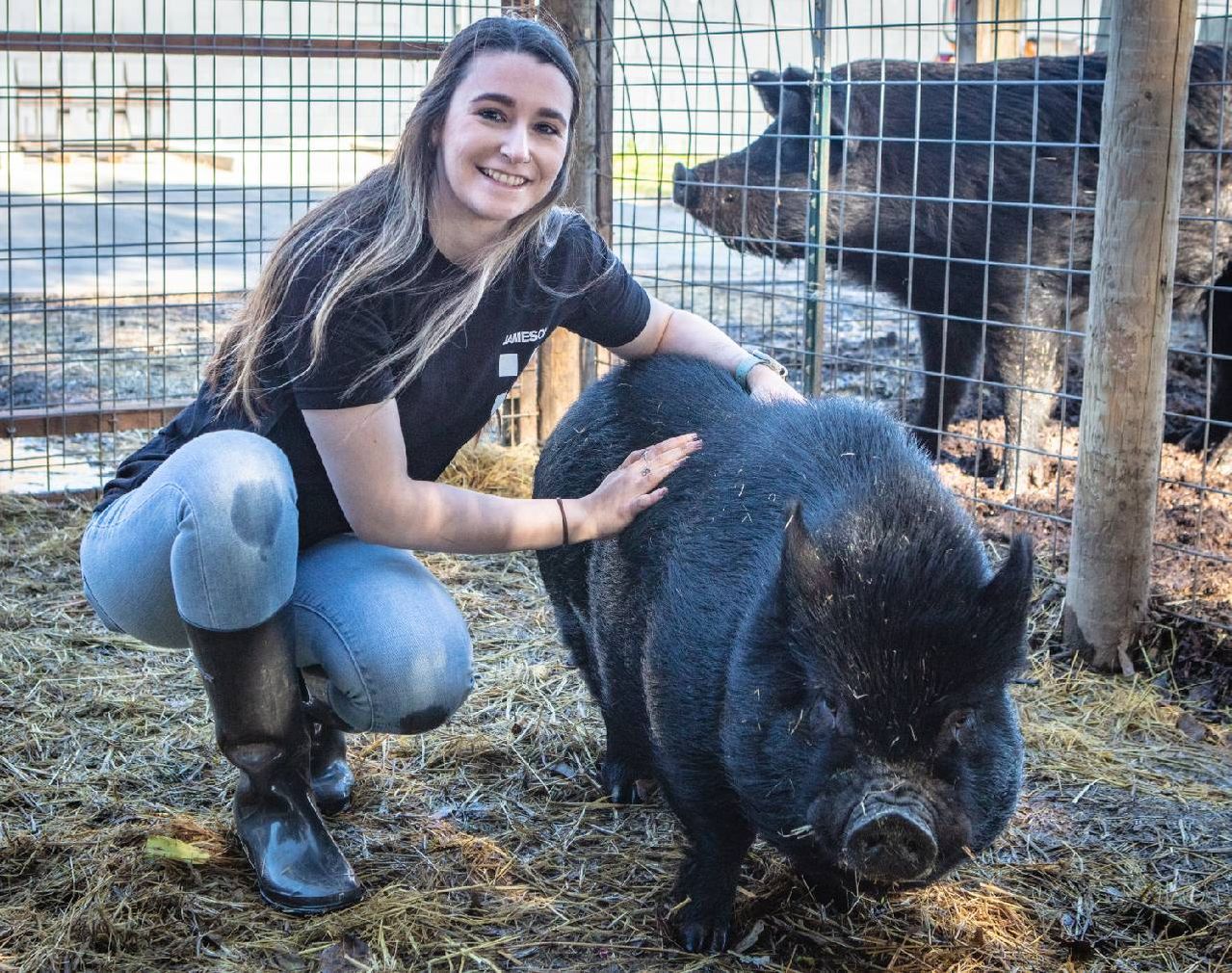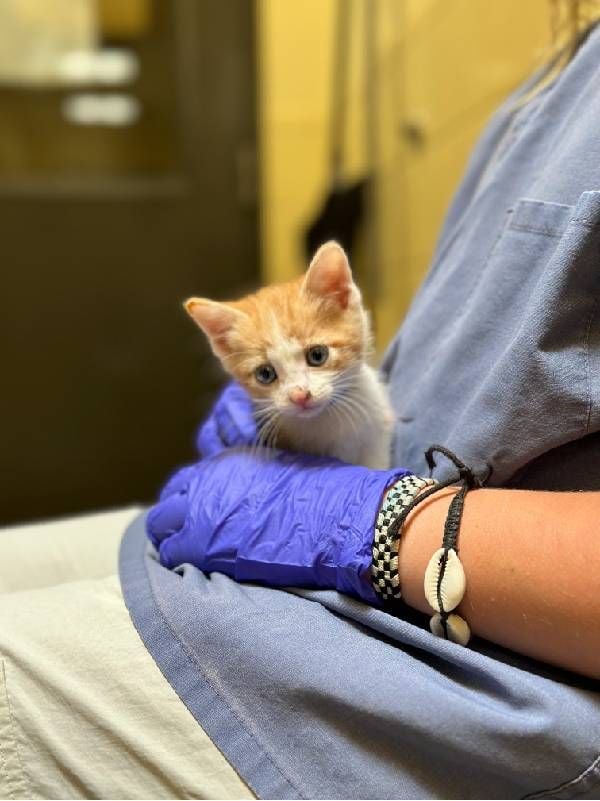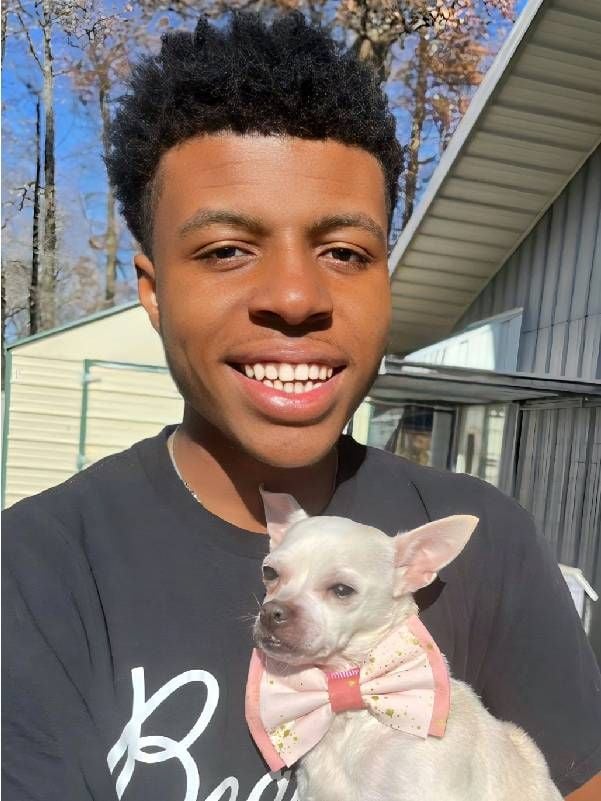Shelter Volunteers Do More than Walk Dogs
Animal lovers are needed for all sorts of tasks at understaffed shelters, from photographing pets for adoption to making treats that dogs love
South Carolina resident Aussie Geer loves volunteering at what she calls a "happy" place: a local animal shelter. For 15 years, she's donated her love and labor at Charleston Animal Society in a number of ways — which only grew after she retired.

Sometimes she joins the "Treat Team" in giving treats, toys and attention to every dog in the shelter. She might spend time doing laundry, cleaning kennels, greeting people at the front door, or answering questions from potential adopters.
Geer helps dogs and cats come out of anesthesia at spay/neuter clinics and spends time with dogs in "real life rooms" with furniture like TVs that simulate life in a home. She delights in watching families adopt a pet, and enjoys forging friendships with the staff and fellow volunteers, even attending weddings and baby showers over the years.
"You are making these dogs and cats happy. You're playing with them. You're giving them attention. So you come away from it feeling very, very positive and very happy."
"A lot of people I know say to me, 'I could never do it. It would make me so sad.' But it's a happy place," she said. "You are making these dogs and cats happy. You're playing with them. You're giving them attention. So you come away from it feeling very, very positive and very happy."
Volunteers like Geer are critically important to the life-saving work of animal shelters across the country — and their help is particularly crucial right now, according to Stephanie Filer, executive director of Shelter Animals Count, a nonprofit that maintains a national database of animal sheltering statistics.
"It is concerning that we have reached back up to our pre-pandemic level of animals entering shelters, and at the same time we don't have enough animals being adopted to handle that volume," she said.
More Animals, Fewer Humans
Filer noted that in the first half of 2023, shelter intake was nearly 15% higher than in 2021; the euthanasia rate for dogs also rose this year. At the same time, shelters are facing staffing shortages nationwide.
"Now is really the time to explore volunteer opportunities."
"It really is this perfect storm of all things happening at once," she said. "In addition to having too many animals in care at shelters across the country, they also have too few staff and volunteers. Now is really the time to explore volunteer opportunities."
While volunteers are always needed to walk dogs in "Adopt Me" vests, there are many other ways to help, according to Joe Elmore, president and CEO of Charleston Animal Society, which takes in 9,000 to 10,000 animals each year.
Enrichment Puzzles for Lucky Pups
"We have a number of roles that are conducive for volunteers of all ages, and particularly volunteers who may be physically challenged," he said.
For instance, volunteers sit at a table every day and stuff plastic water bottles with peanut butter, kibble and other goodies, and then freeze them to create enrichment puzzles that keep dogs mentally stimulated, Elmore said.
On the other end of the spectrum, volunteers deploy with staff around the region to evacuate pets displaced by natural disasters like hurricanes.
Hamsters to Horses
Elmore said 600 foster carers allow the organization to take in more animals — "anything from hamsters to horses," he noted — by temporarily caring for pets in their own homes.
Just as shelters can typically use as many fosters as possible, many also need volunteers who can take quality photos of adoptable animals. Poorly photographed animals have a harder time getting adopted, said photographer Aliza Eliazarov, author of "The Best Dog: Hilarious to Heartwarming Portraits of the Pups We Love," and humane-education manager at the New Hampshire SPCA.

"If you are scrolling through Petfinder or looking online for an animal to adopt, something needs to catch your eye," she said. "A good photo of an animal creates a connection and elicits emotion."
Eliazarov suggests volunteer photographers squeak a toy to get a curious head tilt, or help pets relax by taking them outside for photos (plus, outdoor light is usually best). If a dog has a jaunty personality, consider tying a bandana around their neck, or tie a bow on top of their head. If they have crooked teeth or funny ears, focus on those distinctive quirks.
Educators Are Highly Valued
If photography isn't an interest, Eliazarov echoed that there are myriad roles for volunteers. For example, people who feel nervous around dogs can care for mice, hamsters, rabbits and guinea pigs.
"A good photo of an animal creates a connection and elicits emotion."
Retired teachers, librarians and other educators are prized by humane education departments for outreach to school classrooms and Scout troops, she added.
"There are all different ways for an older person to get involved to help educate a younger generation about animal welfare and advocacy," she said.
Many shelters and rescue organizations need large numbers of volunteers for fundraisers. In California's Napa Valley, over 120 people volunteer at "WineaPAWlooza," the annual fundraiser for the nonprofit Jameson Humane, according to Monica Stevens, co-founder and president.
Events Offer Occasional Openings
"If you fall in love with a rescue (organization), ask when their big fundraiser is, because they always need good volunteers for their fundraisers," she said.
At Jameson Humane, volunteers can help distribute over 4,000 pounds of dog and cat food to local families in need each month, spread awareness through social media posts, offer outreach at the local farmers market and school fairs, or transport animals during wildfire evacuations.
They foster the pets of people escaping domestic violence, deliver pet food to homebound older adults, and pick up donated food for the adoptable animals on the nonprofit's ranch to then feed horses, pigs, rabbits, goats, pigeons, dogs and cats. Retired nurses and veterinary technicians help with the mobile veterinary unit to provide low-cost care in the community.
Bottle-Feed Kittens in Austin

At the nonprofit Austin Pets Alive! in Texas, volunteers can train for more advanced roles like assisting veterinary teams or bottle feeding kittens, according to Blair Stirek, volunteer program manager.
"It's a big commitment — you can't skip any of those feedings — but it's also really rewarding," she said. "People love doing it."
Over 1,000 people foster pets for the organization, which is key since the shelter can house around 300 pets at a time. Another popular volunteer role is "matchmaking" — finding the perfect pet for a potential adopter.
Lauren Rolfe, volunteer program coordinator at Denver Animal Shelter, said the municipal shelter's 430 volunteers are the "backbone of everything we do," which includes caring for over 8,000 animals each year.
Surprising Opportunities
Volunteers can write thank you notes to donors, prep surgical packs for the veterinary team, greet people at vaccine clinics, clean kennels, fold laundry and wash food bowls. People can volunteer without leaving home by scouring social media sites like Nextdoor for posts about lost dogs and checking to see if they've landed at the shelter.
"Who's going to walk by and ignore a dog wearing a bow tie?"
"If they find them, they can say, 'Head down to Denver Animal Shelter.' We have a script they can use to guide people and give them the correct information," Rolfe said.
Denver Animal Shelter offers youth programs for "junior volunteers" aged 8 to 15 years old, who come with a parent or legal guardian to socialize puppies, dogs, kittens and cats through positive interactions. Parents and grandparents can also get young people involved by making pet toys or blankets together and donating them to the shelter.
And Now, Canine Couture
New Jersey teen Darius Brown started making bow ties for shelter dogs when he was just 10 years old. Since then, the 17-year-old — who goes by Sir Darius Brown — has donated over 7,000 bow ties to shelters across the country and internationally.

"Imagine walking into a shelter and seeing a dog wearing a bow tie. Dogs are already cute, adorable and have their own great characteristics, so who's going to walk by and ignore a dog wearing a bow tie?" he said.
With support from his mother and sister, Brown founded Beaux & Paws, a company that supports shelter pets by donating bow ties. To inspire others, he wrote a book called "Project PAWsome: Saving Shelter Pets One Bow Tie at a Time."
He's deeply concerned about the crisis facing animal shelters and hopes more volunteers will step forward to help.
"There's just so much going on and they need help — not just the shelter pets, but the shelters and wonderful staff and volunteers that take care of them until they find 'furever' homes," he said. "It is important for us to work together, both as a family and as individuals, to help save the lives of animals."

